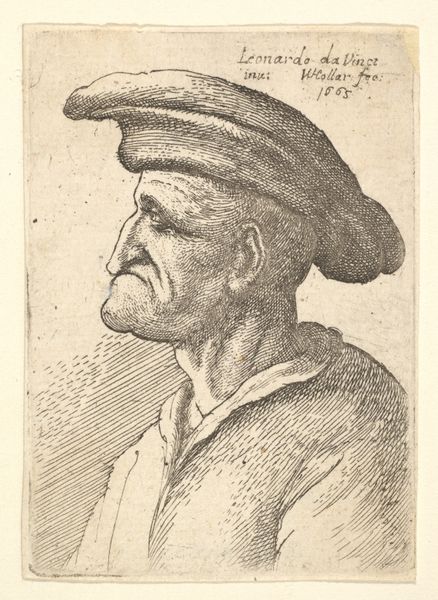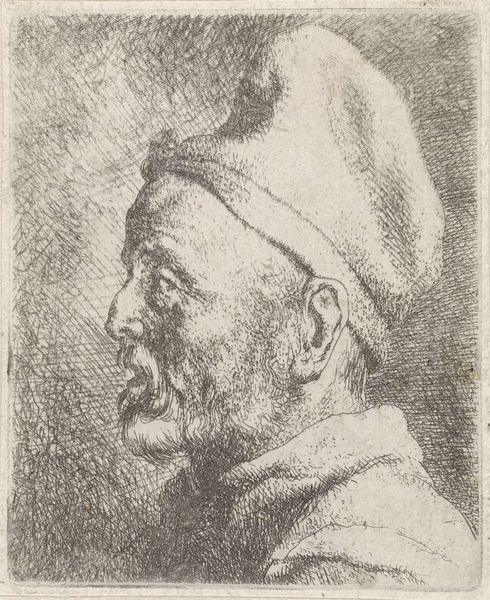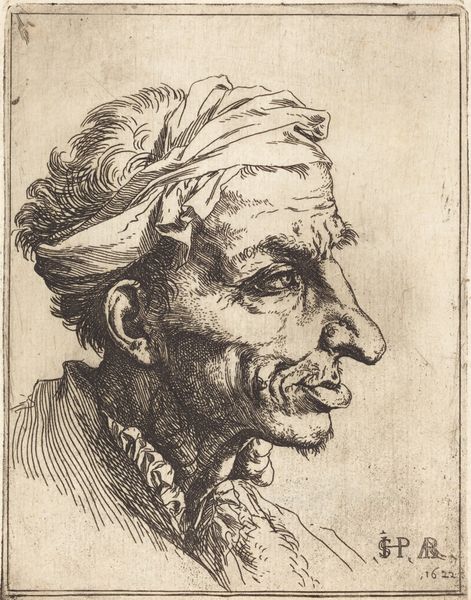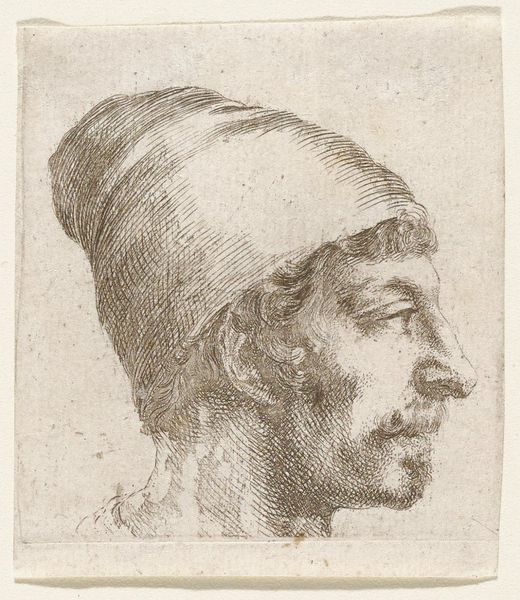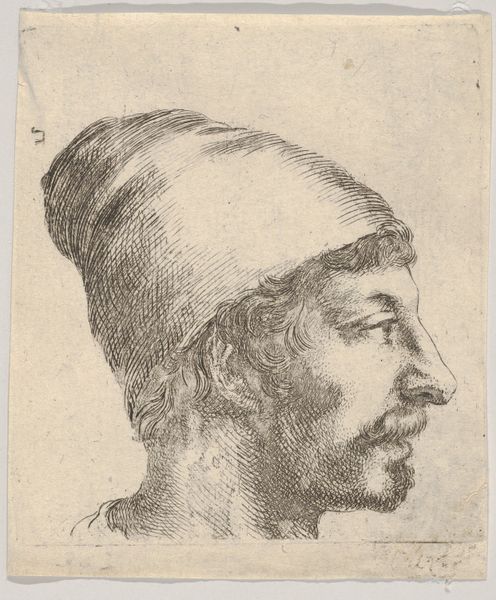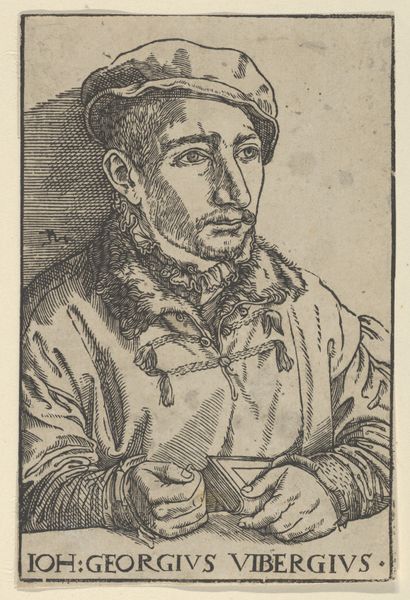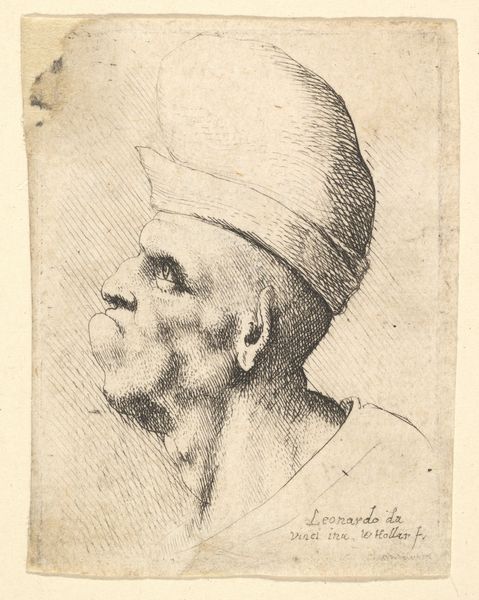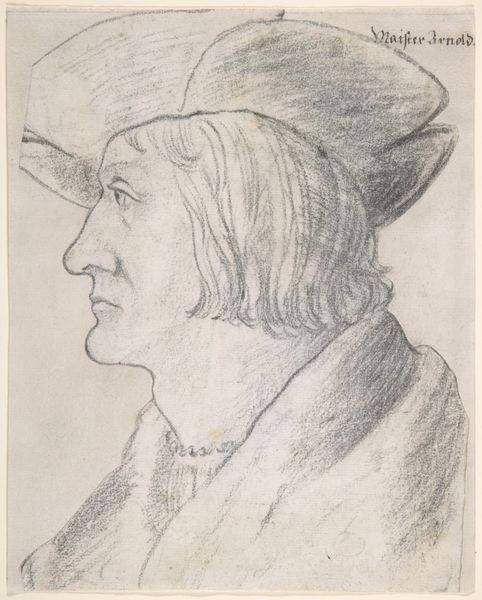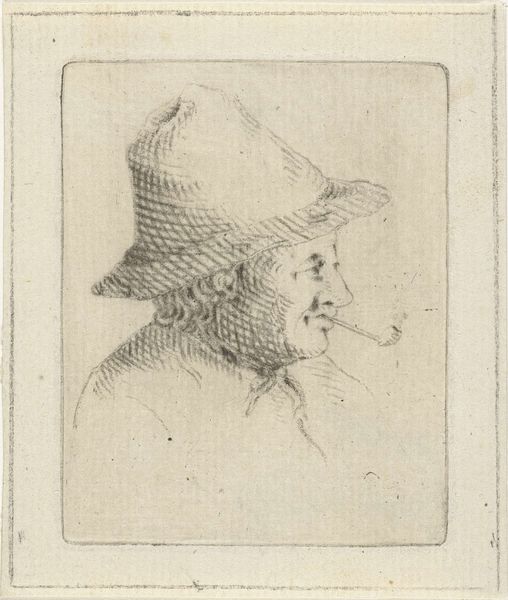
Bust of a man with a flat nose and protruding mouth, wearing flat cap and buttoned coat in profile to right 1660
0:00
0:00
drawing, print
#
portrait
#
drawing
#
baroque
# print
#
caricature
#
caricature
Dimensions: Plate: 2 7/16 × 1 7/8 in. (6.2 × 4.8 cm) Sheet: 2 1/2 × 1 15/16 in. (6.4 × 5 cm)
Copyright: Public Domain
Editor: So, this is Wenceslaus Hollar's "Bust of a man with a flat nose and protruding mouth, wearing flat cap and buttoned coat in profile to right," from 1660. It's at the Met. What strikes me is the almost clinical detail in capturing, shall we say, a less-than-flattering image. What do you see in this piece? Curator: For me, it's all about the printmaking process and Hollar's skill as a craftsman. This isn't just a reproduction; it's an interpretation through a specific medium. How does the act of engraving, the labor involved in creating those lines, influence our perception of the subject? This wasn't high art, it was reproducible. How accessible would such a work be? Editor: That’s interesting! I hadn’t considered how the medium itself contributes to the message. The very nature of a print means it's not a unique object, inviting a wider audience and implying maybe…less preciousness about the subject matter? Curator: Exactly! Consider the social context: who were the consumers of these prints, and what was their relationship to the sitter, or rather, the *image* of the sitter? Caricature, even then, functioned as a social commentary. How might its meaning shift depending on who possessed and viewed it? Is there a connection to fashion? Think about the hat...is that of the period, something everyone can buy at the marketplace? Editor: So it's less about *who* this man *is*, and more about what his depiction, and its material availability, says about the society it circulated within? It's not about him as an individual. Curator: Precisely. It questions notions of individuality itself. This etching blurs lines of class by capturing images that were perhaps intended to be enjoyed by anyone. Editor: Wow, that's changed my whole view of it. Thanks for pointing that out! Curator: Of course. It really highlights how thinking about the material and means of production shifts the entire analysis. I didn’t catch that bit about accessible fashion to read his "image" as available on demand, mass produced as the print is. Thank you!
Comments
No comments
Be the first to comment and join the conversation on the ultimate creative platform.
